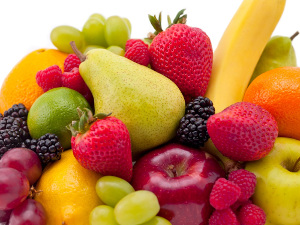Agronometrics in Charts: Will the California avocado party continue into 2023?

In this installment of the ‘Agronometrics In Charts’ series, Colin Fain studies the state of the California avocado industry. Each week the series looks at a different horticultural commodity, focusing on a specific origin or topic visualizing the market factors that are driving change.
Rudolph Hass discovered the Hass avocado in La Habra Heights, California, in the 1920s. Due to its dark skin, the Hass avocado was first not well appreciated among customers. Today, however, Hass avocados are far and away the most popular variety consumed the world over. Our estimates put utilization within the U.S. market at around 96%.
Mexico's modest avocado harvest in 2021-22 characterized the avocado market, with the average price per flat soaring to $47.27 on the spot market. This is the highest average price recorded to date, as can be seen by looking at the data since 2000.
Source: USDA Market News via Agronometrics.
(Agronometrics users can view this chart with live updates here)
In contrast, this year's harvest is abundant. According to the forecast published by the Hass Avocado Board (HAB), Mexico projects its exports to the U.S. in 2022-23 to increase by 22% year-on-year, and by a smaller measure over the 2020-21 season. As a result, spot pricing has dropped considerably, halving to $24.16 in February 2023 from $50.38 a year ago. For context, this pricing is also very similar to what the market offered for February in 2021.
Source: USDA Market News via Agronometrics.
(Agronometrics users can view this chart with live updates here)
As we move into the Golden Sate’s season, the California Avocado Commission announced a projected crop harvest of 257 million pounds of avocados for the 2023 season, which is a drop of around 7% from the 2022 season.
Many factors led to the slight reduction in expected volumes, but the persistent drought in avocado-producing regions of California is a key factor. The sweltering heat towards the end of summer and beginning of autumn in 2022 impacted avocado production, but the majority of the state’s avocado producers were spared temperature spikes that could have been harmful to avocado plants.
The recent California rainfall led to a decrease in the severity of the drought and helped with tree health by leaching excess salts from the soil, they also help with overall sizing. Several communities such as Ventura, Santa Barbara, and San Luis Obispo, however, witnessed torrential rains in a short time period which negatively impacted avocado crops.
Source: USDA Market News via Agronometrics.
(Agronometrics users can view this chart with live updates here)
Though California’s share of the market is less than 10 percent overall, the spring and summer harvest typically serves an important role by filling a low-volume window that opens during Mexico’s lighter months.
Source: USDA Market News via Agronometrics.
(Agronometrics users can view this chart with live updates here)
Traditionally this low-volume window has coincided with the highest demand from U.S. consumers as people add avocados to their sandwiches and salads over the summer months, offering healthy pricing. California has been perfectly placed to take advantage of this situation which can be appreciated by the considerable premium their fruit received year after year.
Source: USDA Market News via Agronometrics.
(Agronometrics users can view this chart with live updates here)
So with the scenario laid out in front of us the question arises, what can a California producer expect from the huge volume of Mexican fruit coming into the market and the lower volumes expected from their own production?
All things said and done, the HAB forecast from March through June expects the total volume of fruit on the market to only increase by 2% compared with 2021, which makes 2021 a decent point of reference as far as what the market could expect in the coming months. If we factor in any growth in demand at all over the last two years, pricing should actually increase during this time period compared to the 2021 reference. There are a ton of caveats that can be thrown on top of an estimate of how much, but all things being equal, our team expects pricing to increase by 7-14%. This would still be a considerable drop compared to last year, but with an average per case above $40.
In our ‘In Charts’ series, we work to tell some of the stories that are moving the industry. Feel free to take a look at the other articles by clicking here.
All pricing for domestic US produce represents the spot market at Shipping Point (i.e. packing house/climate controlled warehouse, etc.). For imported fruit, the pricing data represents the spot market at Port of Entry.
You can keep track of the markets daily through Agronometrics, a data visualization tool built to help the industry make sense of the huge amounts of data that professionals need to access to make informed decisions. If you found the information and the charts from this article useful, feel free to visit us at www.agronometrics.com where you can easily access these same graphs, or explore the other 21 commodities we currently track.














































